Day 5: Extending Rope
As we tie, the rope gets shorter, and we want to keep on tying! A common strategy is to add a new rope at the end of the previous one. We may want to use different techniques depending on the context. Sometimes we want the fastest method, other times we’ll trade speed in order to have more control over the location for the extension or a more solid extension.
Here we explore two methods, the lark’s head and the square knot, but there is a whole family of knots used to tie two ropes together. We’ll explore more variations of rope extension techniques on Day 222.
Lark’s Head Extension
This simple method is very fast and leaves no bulk at the connection point. It requires knots at the end of the rope. These can be pre-tied, or can be added right before adding the extension. This type of connection is not very solid and may untie if you lose tension.
Square Knot Extension
Opening the loops of a lark’s head will transform it into a square knot, this is a phenomenon called capsizing. This extension method starts the same way as the lark’s head extension but requires a few more steps. It allows for more flexibility in the location of the extension, works on any kind of rope, is more solid than the lark’s head extension but will leave a part of the tail hanging.
Starting a New Rope on a Tie
Sometimes we want to add a new rope somewhere else than the end of the last rope. We can start on a limb with a new single-column tie, or we can simply attach on the ropes already on the body.
An overhand knot is a quick and easy way to attach a new rope. It will require tension to stay in place. It can also be quickly untied from the beginning in case of an emergency.
A lark’s head will allow you to attach a new rope in a more secure way anywhere in a tie but it will take more time as you need to pull the whole rope through. It will require to untie the tail completely to untie again, this can be problematic during an emergency.
Video Tutorial
Activate subtitles or transcript to view instructions. Please like and subscribe to support the channel. Also available on Vimeo thanks to our patrons on Patreon.
Practice Time!
Tie a single column tie and enjoy some improvisation time in the same spirit as day 2. Keep on adding ropes when you reach the end. This will help practice extending rope, and removing the extensions on the fly.
Exploration ideas:
- Try different styles of extension you use to drill different methods
- How much tension do you need to keep the extension in place?
- Shake the tie around; are there locations where the extension is at risk of untying?
- What are the situations where you prefer one style of extension vs the other?
- Is one side of the extension more flat on the body?
Can you tie the extension one-handed?
Being Tied: Exploring Pauses – sansblague
There are different kinds of pauses in the process of being tied. There might be some adjustment that needs to be made, something itching, cats fighting outside taking your focus, or one of you sneezing: All those are inevitable and, in a way, involuntary pauses. And then there are the other pauses: breathing, changing body position, or extending a rope. While you are being tied today, take the occasion to stay aware of the pauses. What is a pause, where does it start and end? What can you do inside of it that maybe you cannot do while you are processing the information of rope being put in new places? How can you make the pauses meaningful for yourself?
Tying: Adding Pauses – Andy Buru
One of my favourite things when tying is the pauses between things; when finishing a knot, a wrap around the body, or extending a rope. They give me time to appreciate what I have created, think about what I want next, and enjoy looking forward to that. Adding pauses is like a dramatic pause when telling a story or an exclamation mark when writing. In your next tie, I would like to encourage you to slow down and enjoy the pauses.
Inspirations and Resources
- Joining Rope For Shibari by Bondage Tuition
- Joining ropes tutorial using a Larks Head by mrluckiesrope Part 1 – Part 2
- Finding the bight, joining rope, coiling rope by Anatomie Studio
- Tsuginawa by Yukinawa Max
- How to easily extensions off of your ropes by em__ties
- Joining a doubled rope to a doubled rope by -Steven-
- Extending rope by Tracker
- Quick-Bights “how do I join two pieces of rope” by TwistedMonk
Video References
We compiled a Youtube playlist with various videos on this topic, let us know if you find others we should add to this list. Note that video references may display risky or unstable techniques, viewer discernment is advised.
Credit: Pictures – M/R: Ebi McKnotty R/P: AlexK7

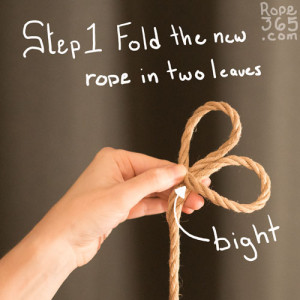
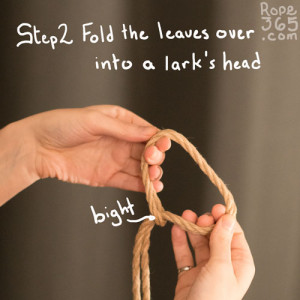
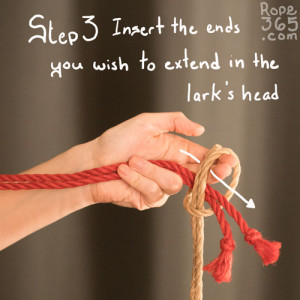
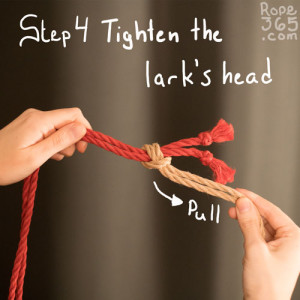
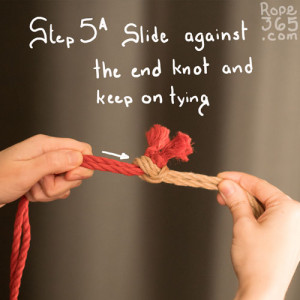
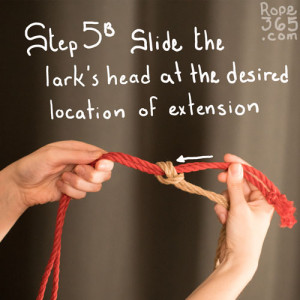
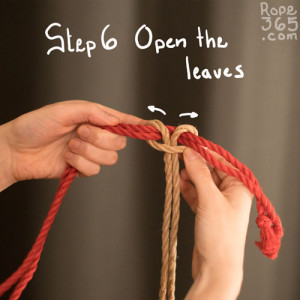
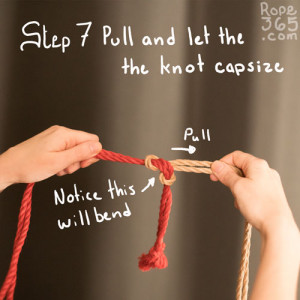
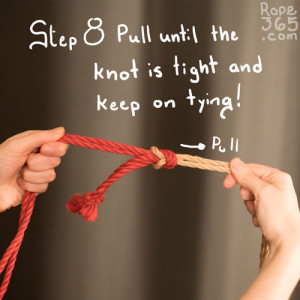
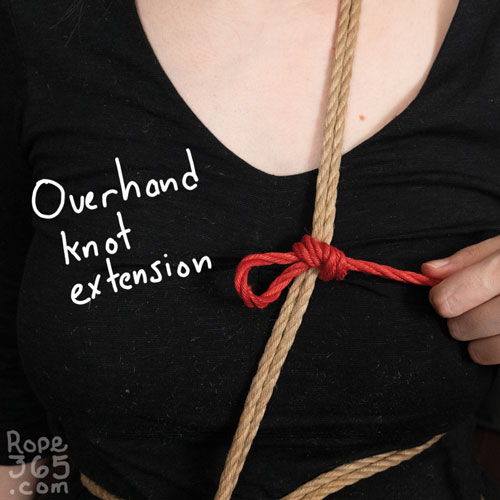
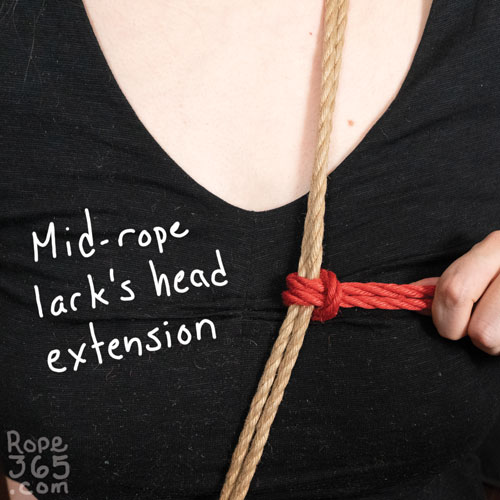
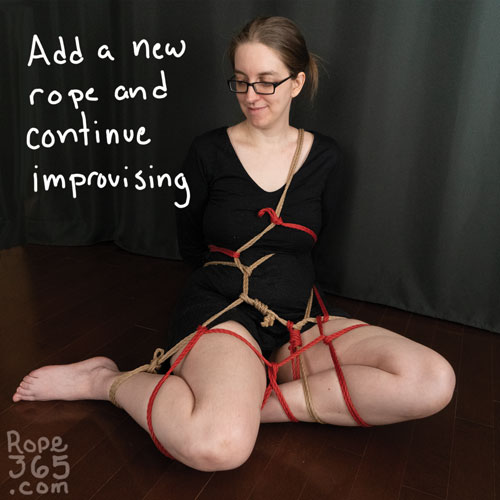
2020-07-28 at 12:06 PM
This site is such a great resource!
Just wanted to point out that the description for the Cow’s Hitch Extension is the same as the Square Knot Extension — something must have gotten left out.
2020-08-16 at 3:18 PM
Thank you! The copy-paste mistake has been fixed!